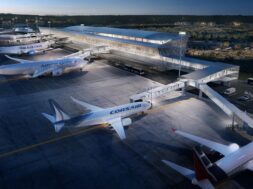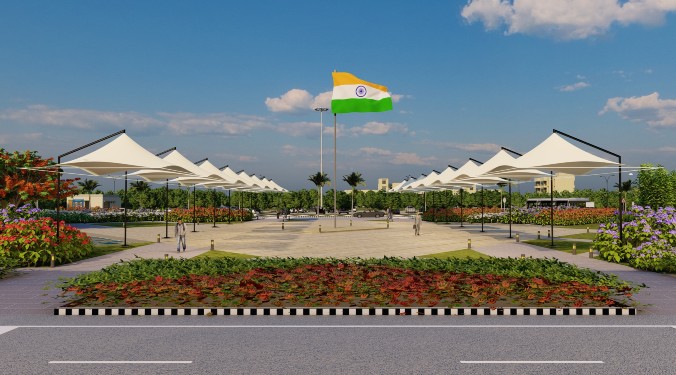Elevator is literally the lifeline of a building and the breakthroughs in elevator technology have made it possible for the buildings to grow tall,” says Antony Parokaran, CEO, Schindler India
As growing vertical is a major trend in building construction today, moving people in an efficient & safe manner is the biggest challenge. In this interview, Antony Parokaran talks on the expected opportunities in Indian market, current growth trends, opportunities, and challenges. He also says, "Schindler is truly poised to become the `numero uno’ of Indian elevator and escalator market."
The new government in centre plans to build 100 smart cities across the country. How do you look at the opportunities?
Apart from smart infrastructure and smart governance which are crucial for making of a smart city, smart buildings will be an integral part of a smart city. Smart building means smart energy management, safety, security, and intelligent traffic management within the building. This is where elevators and escalators play an important role, because they are the lifeline of any building, especially in high-rise buildings. With an early involvement in the project planning with architects and consultants, we suggest the optimum number of elevators to handle the traffic, with the help of our advanced traffic simulation software. This is very important as once constructed the number of elevators cannot be changed without making substantial changes in building structure. So we help them to get it right the first time. The first elevator model Schindler brought into the Indian market was called `Schindler SMART’. This was a fully automatic doors elevator in the times when we had manual door elevators everywhere. Today, we offer our machine room-less and gearless elevators which save construction costs and space. It also improves building aesthetics as there is no need to build machine room on top of building. Machine room-less elevators also reduce energy consumption, do not use gear oil, and contribute to the green building. Apart from this, we also offer features such as automatic rescue device, fire-rated doors as standard, which add to the safety of the elevator.
How do you view the demand of elevators in skyscrapers?
Elevator is literally the lifeline of a building and the breakthroughs in elevator technology have made it possible for the buildings to grow tall. The important part here is to plan for the correct number and specifications of elevators, considering the type of building, its tenancy, population etc. The reason why this is so crucial is because once the elevators are installed, it is extremely difficult to change, or add more elevators without making substantial changes to the building structure. With an early involvement in the project planning with architects and consultants, we suggest the optimum number of elevators to handle the traffic. With advanced traffic analysis tool based on real-time simulation, Schindler adds a lot of value on this front, by helping our customers to plan for the optimum elevator configuration while designing their buildings. In large metros, buildings continue to grow taller. The taller the building, the more challenging it is to design and install the elevators. At Schindler, our experts work closely with customers to plan, deliver and install high-speed elevator solutions, customised to the building needs. One more trend is to install destination dispatch control system, which is a smart way of managing traffic in tall buildings. We move one billion people every day, across the globe! In tall building segment Schindler is the most preferred elevator supplier. In India some of the skyscrapers like Imperial Towers, Antilia and Shreepathi Arcade are equipped with Schindler mobility solutions. The Imperial Towers is the existing tallest building in India and has the fastest elevators with the speed of 6 meters per second. We are proud to be associated with the tallest residential building in the world – the Lodha World Towers. Schindler will supply a total of 25 elevators, which include the four fastest high-rise elevators in India, Schindler 7000, reaching a speed of 8 metres per second.
Could you highlight some of the recent trends and developments in the elevators industry?
Huge urbanisation potential, relatively young population and increasing educational opportunities should continue the India growth story for years to come. The main metro cities would continue to rise higher, while rapid growth in smaller towns would transform them into new large cities of tomorrow. We are very optimistic about the long-term growth of the elevator and escalator market in India. Our customers also increasingly prefer gearless and machine-room-less elevators over the traditional elevators which require machine room on top of the building. This offers them more flexibility to design the building, and also save the cost and time required to build the machine room. The challenge is to have skilled, technical employees to manage such high growth. At Schindler, we have proactively invested in training our employees on elevator installation and maintenance. Our three state-of-the-art training centres, one each in Noida, Bangalore and Mumbai, ensure that each of Schindler fitters and service technicians is trained and certified to work on our equipment, and our customers know that their elevators are in safe hands.
What kind of innovative technology and unique safety features Schindler elevators have?
The energy required to operate an elevator can account for up to 80 per cent of its environmental impact over its entire life cycle. To improve energy efficiency, Schindler uses materials that have lower environmental impact and can be disposed in ecologically sound manner. The development of much lighter components has resulted in further energy savings. Schindler’s Miconic-10 hall call destination system optimises travel within buildings and thus leads to reduction in energy consumption. Our third generation – the revolutionary Personal Occupant Requirement Terminal (PORT) transit management system – now interconnects the entire building and provides architects with new possibilities in traffic management and security planning. In addition, modern elevator drives with energy recovery systems feed unused energy back into building’s electricity grid, resulting into energy saving. We continuously improve the energy efficiency of our escalators also. With ECOLINE power management, our customers can define whether the escalator should run at full speed during peak times and automatically slow down or even stop when there are no passengers.
Advantages of PORT (Personal Occupant Requirement Terminal)
Lower energy costs: Helps transport people in most efficient manner with effective utilisation of elevators, even under heavy traffic loads. Building communication: Communicates seamlessly with building security and access control system so that proper admission credentials and authorisations are in place and this enhances security and safety to a great extent.
Personalisation: Provides a personalised service based on passengers’ needs, for example, for those with disabilities, it can allocate more elevator space or extend the time for which elevator doors will remain open. It can also be programmed to send a dedicated elevator for concierge service or VIP guests.
Access control: When a passenger scans a pre-programmed RFID card at the PORT terminal, the system verifies that person’s credentials and automatically calls an elevator to transport the person to authorised floor.
10
Cookie Consent
We use cookies to personalize your experience. By continuing to visit this website you agree to our Terms & Conditions, Privacy Policy and Cookie Policy.









